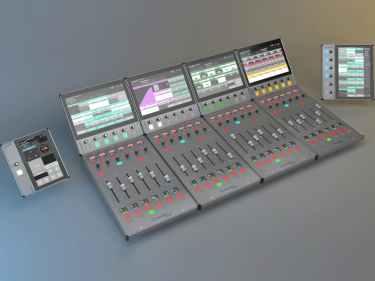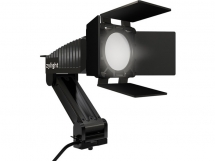| Українська | English | |||||||||||
|
|||||||||||
| News | About company | Service-centre | OB Van/SNG Rental | NextGen Energy Solutions | Contact us |
|
|
Engineering Service, Inc.
» News News At NAB 2022, Calrec will run three independent consoles from a fully redundant pair of ImPulse cores; a 48 dual fader Apollo console, a 40 fader Artemis console and a headless console running Calrec Assist on a PC.
ImPulse is the most powerful DSP engine on the planet and has native SMPTE 2110 connectivity. It’s compatible with the Calrec Assist web interface as well as Calrec’s Apollo and Artemis consoles to provide a simple upgrade path for existing Calrec customers moving to an IP domain. ImPulse allows up to four independent mixing environments to run from a single core, wherever in the world it’s located, and each independent mixer can access up to 1458 paths. Calrec Assist is a browser-based interface that creates a virtual console environment allowing operators to mix directly from a computer or laptop. It’s compatible with a range of Calrec products to help broadcasters streamline workflows, improve cost efficiency, and expand the variety of coverage. Calrec's flexible Type R will sit on the same IP network, as will the rugged Brio console, connected via an AoIP box. Calrec’s AoIP and Gateway boxes give Calrec users on a Hydra2 network the ability to merge onto an IP network. This means they continue to get value from their original investment while tapping into the benefits of IP workflows. New: Type R Talent Panel and GPIO Box Calrec's Type R is a mixing console designed to allow customers to take advantage of distributed production and flexible workflows. Its integrated native IP core provides virtual working practices and integration with station automation systems like Ross Overdrive, Sony ELC and Grass Valley Ignite. Type R can provide fully automated programming with real-time adjustment of external factors via a standard web browser, and its small and highly portable hardware elements can be quickly added if required. Powered by standard POE switches, Type R has just three panel options; banks of 6 x faders can be added, as well as user definable soft panels like Calrec's Large Soft Panel (LSP) and Small Soft Panel (SSP). Talent Panel At NAB 2022 Calrec adds a compact Talent Panel to the mix. This slimline unit allows guests to switch between multiple sources via its integrated hi-res TFT and adjust headphone volume with a dedicated rotary control. Four switches allow for the panel to be customised to the individual user with common functions like talkback and cough switches; this ensures only essential controls are close to hand. Easily mounted into furniture and with connections over standard cat5, the Talent Panel acts as an AoIP endpoint and can be quickly configured, and multiple devices can be added quickly wherever they are required. GPIO Box Calrec's new GPIO unit for Type R is a 1U box which delivers an additional 32 x GPOs and 32 GPIs for interfacing with external systems such as playout, phone systems, codecs etc. Functionality can be added onto physical buttons on Type R fader panels, soft panels or web UIs, and configured via Calrec’s user-friendly Connect application. RP1 Remote Production Calrec’s 2U RP1 remote production unit takes your favourite Calrec console anywhere in the world without ever leaving the studio. A remotely controlled processing engine like RP1 means dedicated control rooms can be used to mix feeds from multiple remote venues. Remote production models produce more live coverage with minimal resources. Many large international sporting events have been mixed with RP1 in the last 12 months – in fact Calrec has more experience in REMI/at-home production models than any other audio console manufacturer. Brio Brio is a plug-and-play broadcast console which slots into any broadcast workflow, is easy to operate and has comprehensive built-in I/O. It is loaded with dynamics and delay on every path, has a huge internal router, multiple monitor outputs and is expandable for future growth. Calrec's new Brio 36 Duet comes with internal Hydra2 connectivity, comprehensive built-in IO and 96 input channels as standard. The Brio 36 Medley package includes everything on a Brio Duet plus a Dante 64 card or MADI I/O module, and an external Br.IO box with 24 mic/line inputs, 16 analogue outputs & 8 AES I/O. « To the list of news |
|
|||||||||||||||||
 |
+38 (044) 593-18-20 +38 (073) 593-18-20 +38 (096) 532-96-82 +38 (095) 532-96-82 Service center Telegram @Engineer_Service |

|
|
|||||
 |
e-mail: engineer-service.tv 15 Vavylovykh str., Kiev, 04060, Ukraine Authorized service centre of Panasonic, Sony, JVC, Fujinon, Canon |
|||||||








